If you’re a trekking enthusiast and you’re planning to explore Peru, the Inca Trail and the Choquequirao Trail are two of the most exciting and challenging options you can choose from.
Both offer breathtaking landscapes of the natural surroundings of Cusco, a rich cultural heritage, and, of course, the chance to get up close to the history of the Inca Empire. However, each has its own unique features, challenges, and rewards.
The Inca Trail, famous for leading to Machu Picchu along the same paths once walked by the Incas, is the most well-known, attracting adventurers from all over the world. On the other hand, the Choquequirao Trail is less crowded and offers a more isolated and intimate experience, taking you to the mysterious archaeological complex of Choquequirao.
Which is the best option for you? Let’s find out!
What are the Inca Trail and the Choquequirao Trail?
If you’re about to start your trip to Cusco, you probably already know that this region is filled with incomparable natural treasures and a deep history. The Inca Empire was one of the largest in the Americas and left a cultural and architectural legacy that continues to amaze the world. In Cusco, you’ll be able to visit impressive archaeological sites that will connect you with the past and with the very essence of Peru’s history.
To enrich your experience even more, you can reach many of these places through beautiful trails that cross the best of mountains and jungle of the Andes. The Inca Trail and the Choquequirao Trail are two of the most beautiful routes.
- The Inca Trail is an ancient network of paths built by the Incas that connects different regions of the former empire. Its most famous section leads to Machu Picchu, traversing stunning Andean landscapes, cloud forests, and unique archaeological sites in every segment. It’s one of the most popular trekking routes in South America and one of the highest rated worldwide.
- The Choquequirao Trail, on the other hand, is a less crowded but equally spectacular route that leads to the archaeological complex of Choquequirao. This Inca city is known as “the sister of Machu Picchu” due to their similarities. Both have terraces, temples, and hydraulic systems, and are located in high and remote areas of the Andes. This trail offers a more challenging and authentic experience, perfect for trekking and history enthusiasts.
In this article, we’ll show you the main differences between these incredible routes so you can experience a magical adventure in the heart of the Andes. Our goal is to help you choose the one that best suits your interests and expectations. Let’s go!
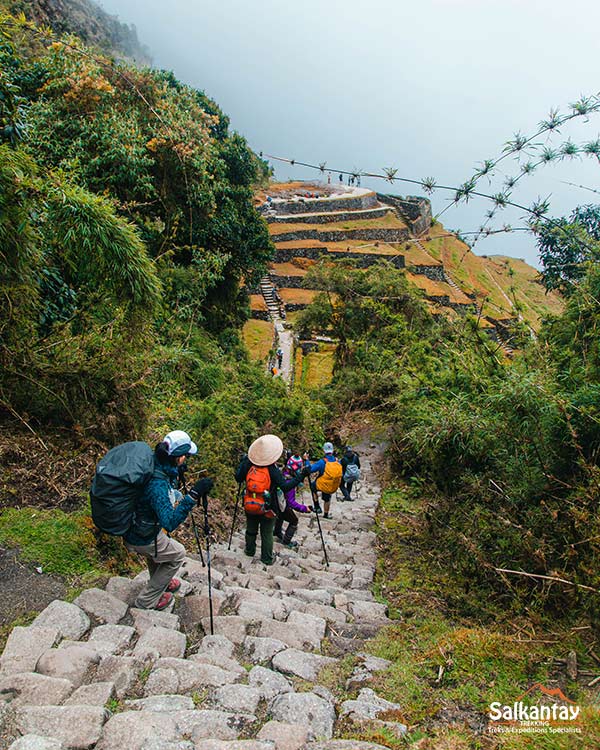
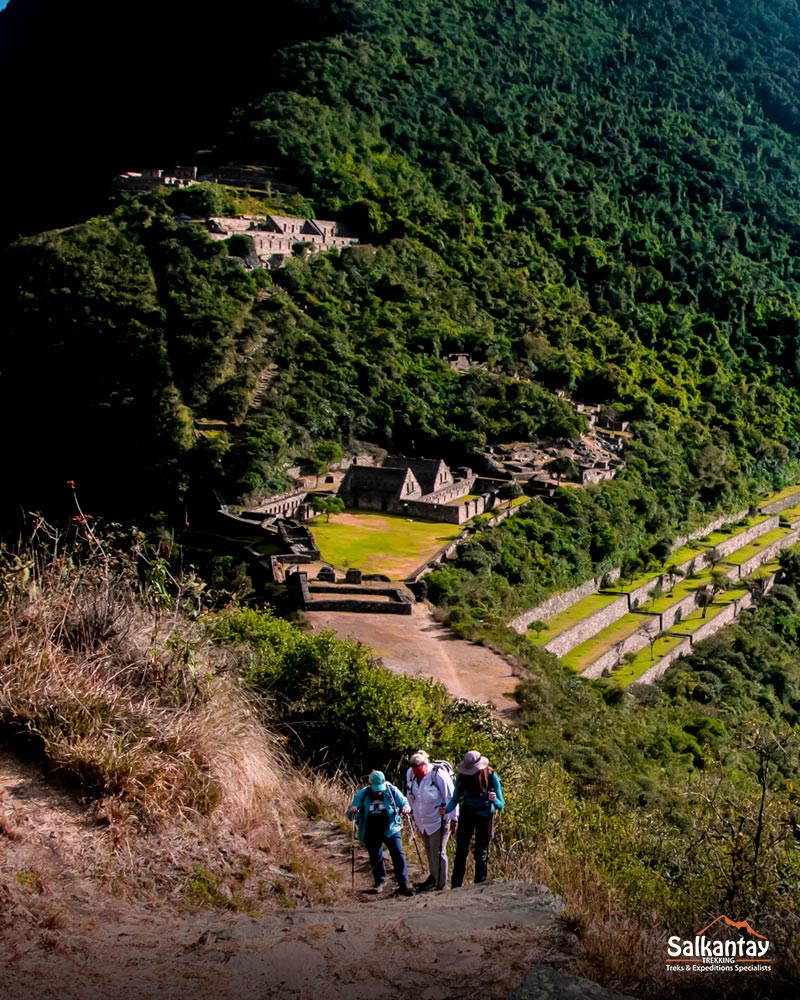
Duration and Distance
Before choosing your route, it’s important to know how long it will take you to complete it and how many kilometers you’ll have to walk. These two alternatives involve multi-day hikes, so if you’re not used to this kind of physical effort, this aspect could affect your adventure.
Inca Trail
The famous Inca Trail lasts 4 days and 3 nights in its classic version, covering a distance of approximately 43 km (26.7 miles).
- Day 1 – 14 km / 8.7 miles in a total of 6 to 7 hours of hiking.
- Day 2 – 16 km / 9.4 miles with 8 to 9 hours of trekking.
- Day 3 – 9 km / 5.6 miles with a total of 4 to 5 hours of hiking.
- Day 4 – 5 km / 3.11 miles in a total of 2 to 3 hours of hiking.
The Inca Trail takes adventurers along a historic route that ends at the incredible citadel of Machu Picchu, one of the Seven Wonders of the World. The hike is relatively short but intense, with high steps and steep paths.
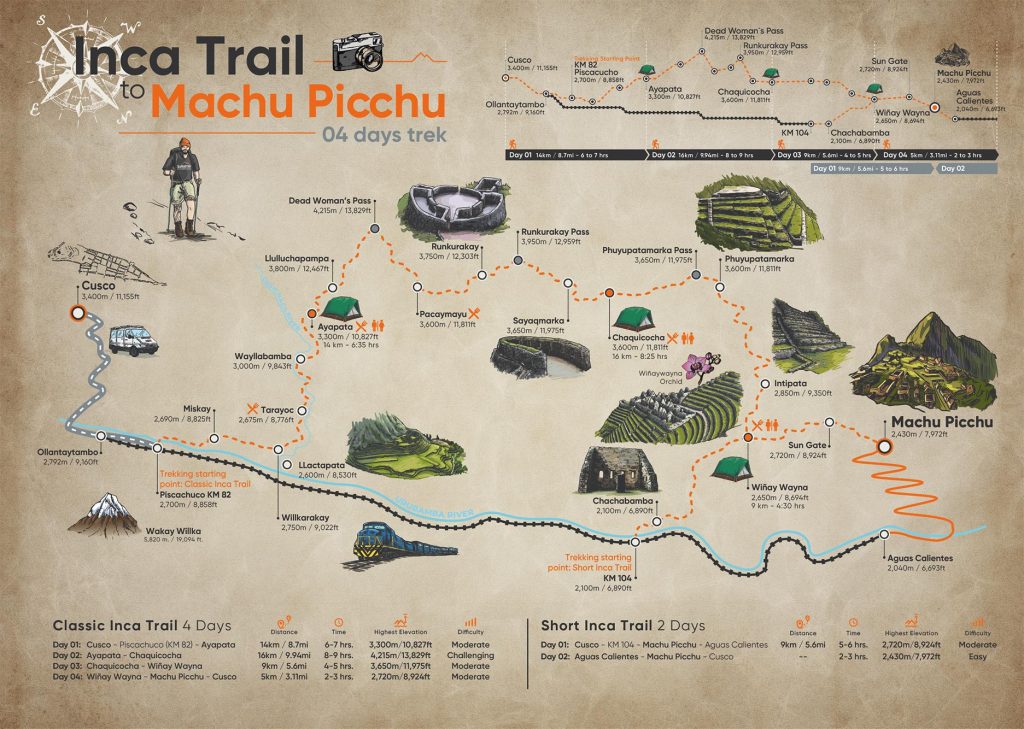
Short Alternatives to the Inca Trail
There are shorter alternatives for those who don’t have much time in Cusco or prefer to reach Machu Picchu without so many days of hiking. These options allow you to enjoy the trip without long treks, better adapting to different types of travelers.
- Short Inca Trail: It lasts 2 days in total. On the first day, you visit the archaeological site of Wiñay Wayna, walking around 9 km / 5.6 miles with a total of 4 to 5 hours of hiking. The second day is reserved for the visit to Machu Picchu, walking approximately 5 km / 3.11 miles in a total of 2 to 3 hours of hiking. It’s a perfect option for those who want to experience the Inca Trail without long walks.
- One-day Inca Trail: On the same day, you hike part of the Inca Trail up to Wiñay Wayna before reaching Machu Picchu. Ideal for travelers with limited time or who prefer a lighter hike. You walk around 9 km / 5.6 miles in a total of 4 to 5 hours.
CAUTION: The Inca Trail has limited spots and requires advance reservation. To protect the natural environment and archaeological heritage, authorities have established a daily limit on the number of people allowed to hike the trail. Therefore, it is essential to book in advance and secure your place on this famous route.
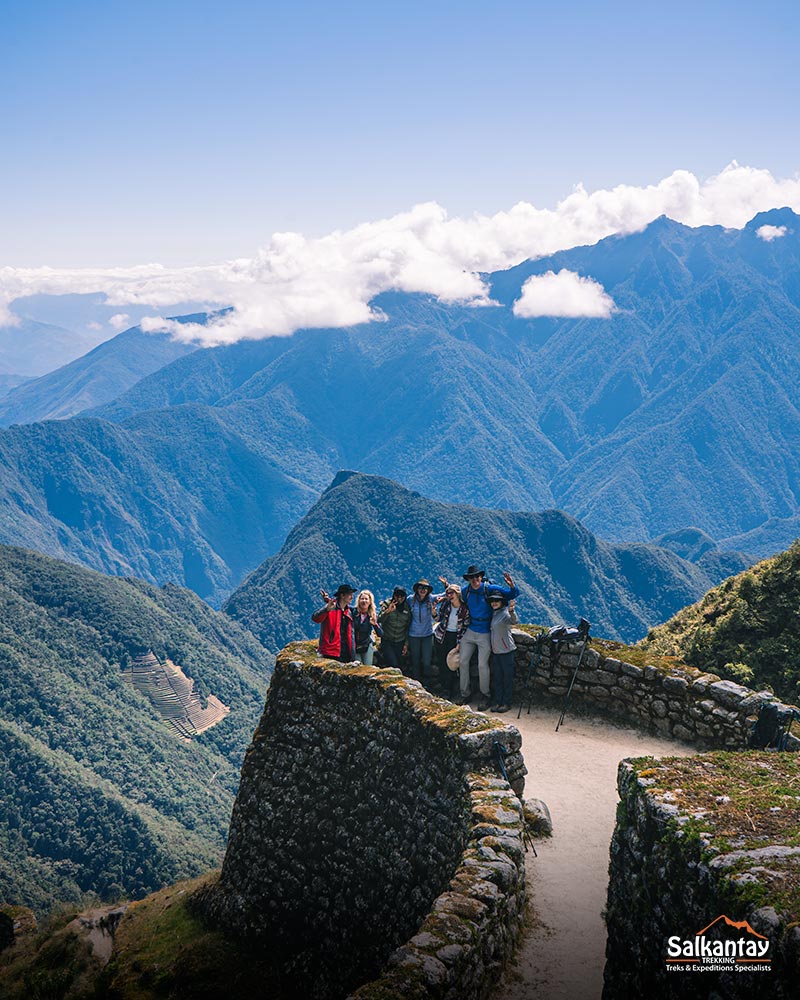
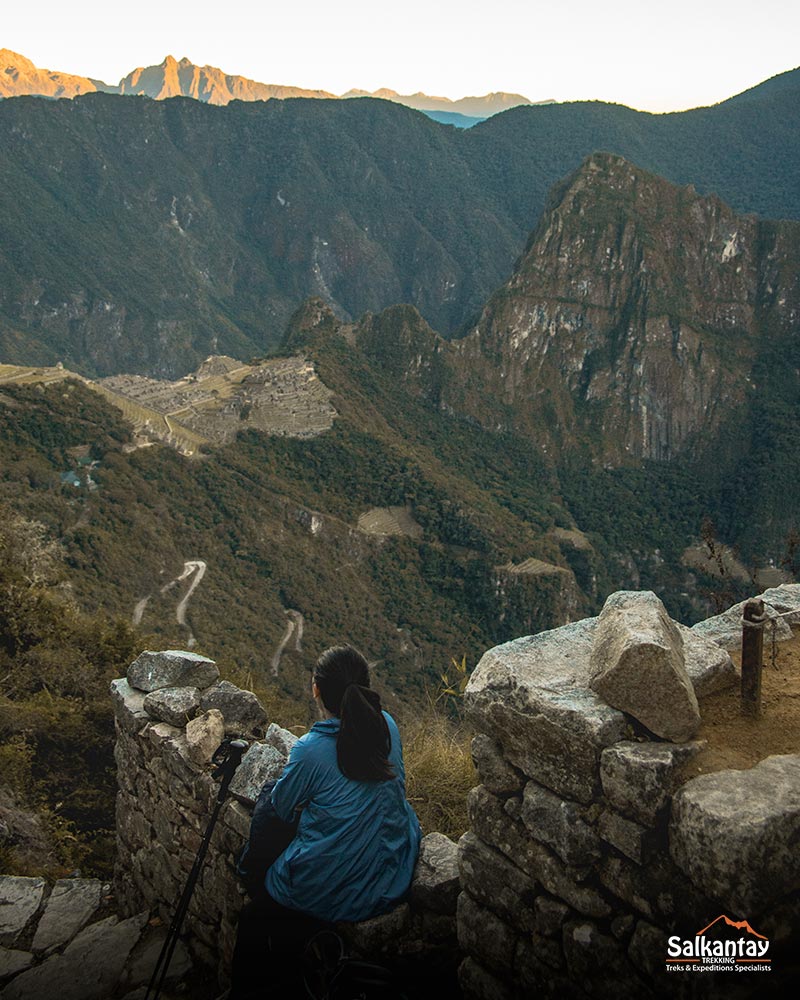
Choquequirao Trail
On the other hand, the classic Choquequirao Trail is significantly longer and requires more physical endurance. The full route lasts about 5 days, covering roughly 60 km (37.3 miles). It takes travelers to the ruins of Choquequirao, a less known but equally impressive Inca citadel. Besides the greater distance, the uphill and downhill sections at varying altitudes make the experience even more challenging.
- Day 1 – 8 km / 4.97 miles with a total of 3 hours of hiking.
- Day 2 – 11 km / 6.82 miles with 6 to 7 hours of trekking.
- Day 3 – 6 km / 3.73 miles with a total of 4 to 5 hours of hiking.
- Day 4 – 11 km / 6.82 miles with a total of 6 to 7 hours of hiking.
- Day 5 – 8 km / 4.97 miles with a total of 3 hours of hiking.
The archaeological complex of Choquequirao is located in a remote area that can only be reached by walking along a single trail. For this reason, the route is an out-and-back trip: you will reach the citadel on the third day but must return by the same path.
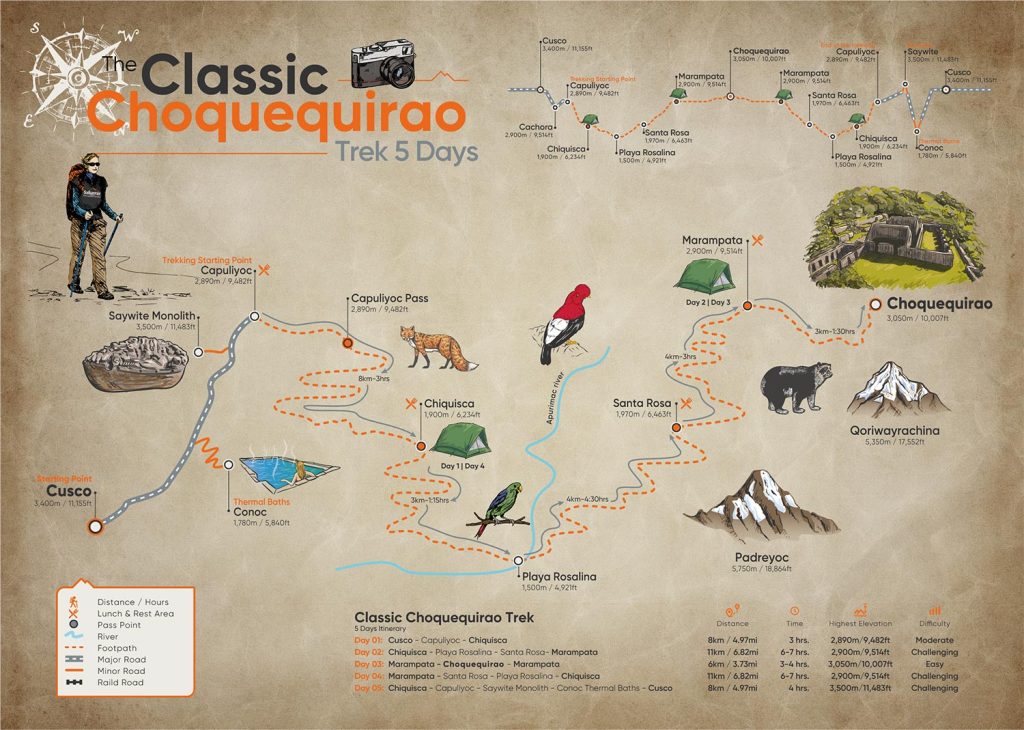
Alternatives to the Choquequirao Trail
Whether you want to shorten the experience or extend it by combining it with Machu Picchu, there are alternatives to the traditional Choquequirao Trail. All options offer an epic journey through unforgettable landscapes, although they may be more challenging than the classic route.
- Short Choquequirao Trail: The experience is condensed into 4 days, meaning each day you will cover more distance and the hiking pace will be more intense. It’s an ideal option for those with less time who don’t want to miss the majesty of Choquequirao. The distances each day are:
- Day 1: 13 km / 8.08 miles with 6-7 hours of hiking.
- Day 2: 10 km / 6.21 miles with 6 hours of hiking.
- Day 3: 11 km / 6.82 miles with 7 hours of hiking.
- Day 4: 8 km / 4.97 miles with 3 hours of hiking.
- Choquequirao and Machu Picchu: If you are unsure whether to visit Choquequirao or Machu Picchu, this epic adventure will take you to see the two greatest architectural creations of the Incas. You can choose between the 7-day or 8-day route, although both require great physical endurance and experience in long hikes. After exploring Choquequirao, you will continue through jungle trails until connecting with part of the Salkantay Trail. You will finish the journey at Machu Picchu before returning to Cusco. The distances are:
- 7-day route: A total of 86 km / 56.5 miles
- 8-day route: A total of 102 km / 63.4 miles
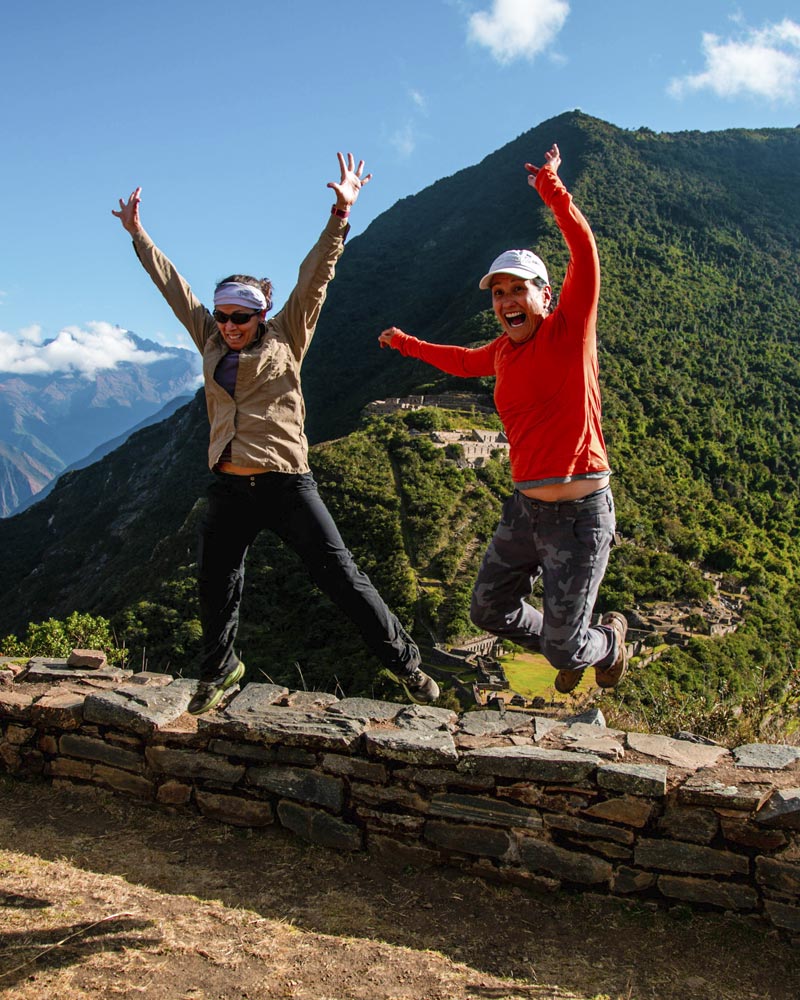
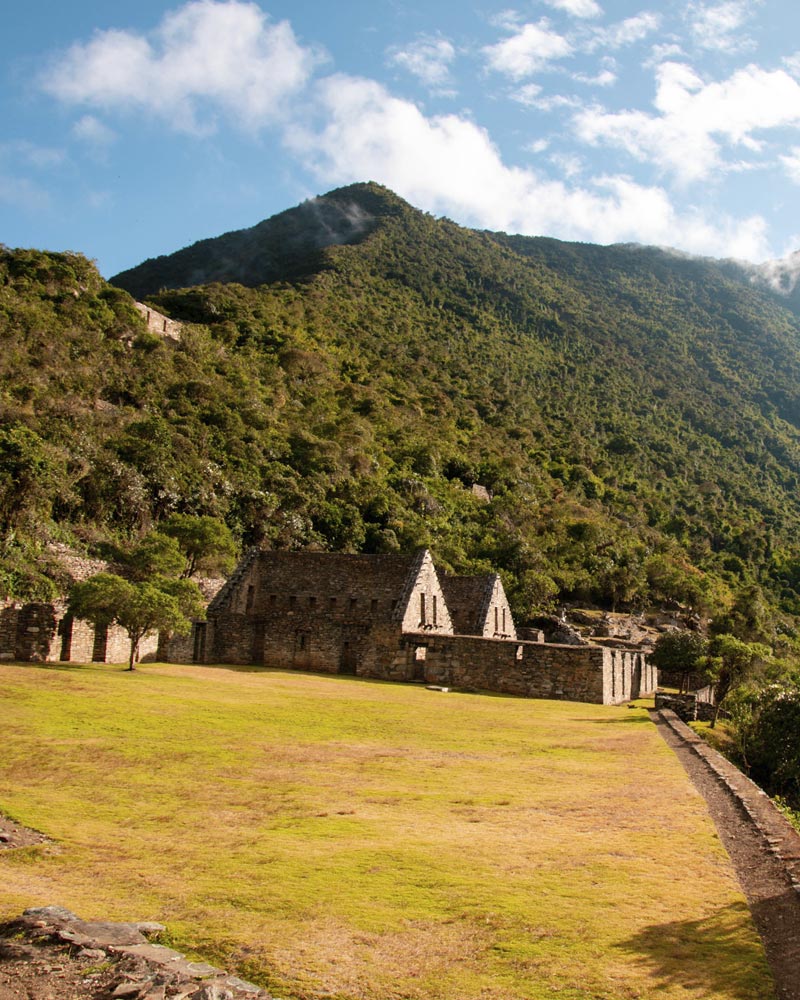
Physical Difficulty
Inca Trail
Although this trek is not among the longest in Cusco, the Inca Trail has a moderate to challenging level of difficulty. It involves steep climbs, changes in terrain and altitude (ranging from 2,400 to 4,200 meters / 7,874 to 13,780 feet), high steps, and exhausting days of hiking. That’s why, even though it’s a shorter route, it requires good physical preparation.
Choquequirao Trail
The Choquequirao Trail is a challenging route, with a difficulty level somewhat higher than the Inca Trail. It’s a tough trek due to the large elevation changes, warm climate, and rugged terrain of the trail. The intense ascents and descents, with some particularly difficult sections, demand excellent physical conditioning. The route is undoubtedly more complicated and requires greater endurance, making it suitable for adventurers with more trekking experience and good physical health.
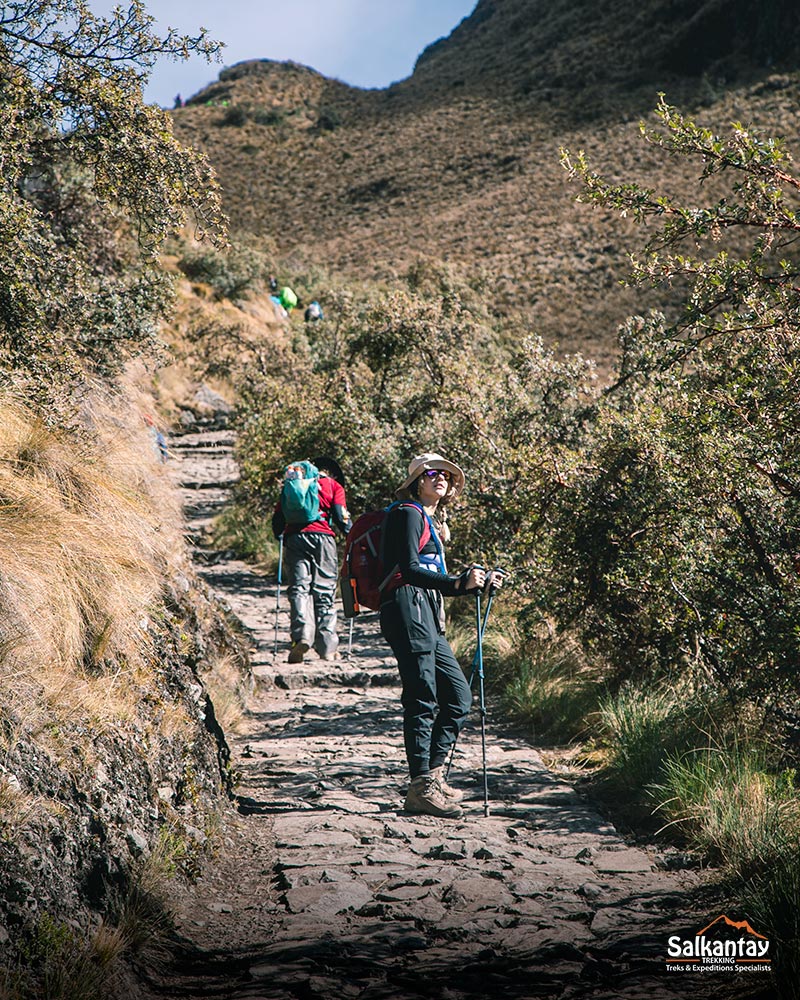
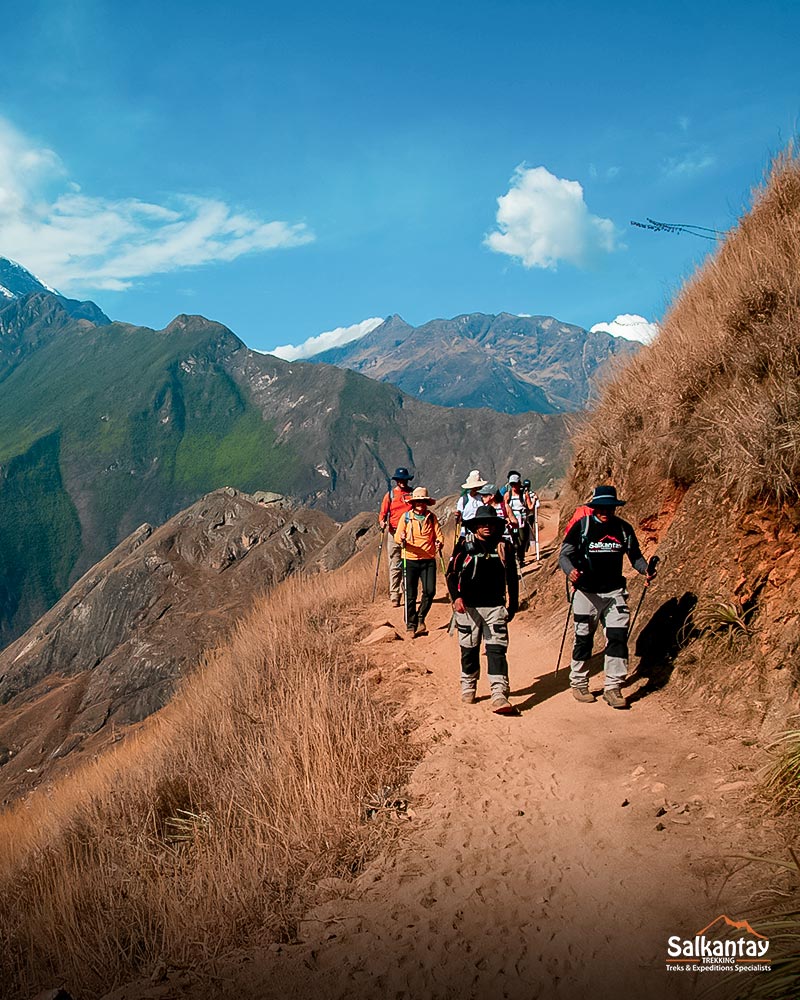
Climate and Altitude
The Inca Trail and the Choquequirao Trail cross different regions of the Andes and, therefore, present climate variations along the way. The main difference lies in the type of climate and altitude that each one offers. Let’s better understand the differences in climate between the two:
Inca Trail
The Inca Trail starts at an altitude of about 2,400 meters / 7,874 feet and reaches up to 4,200 meters / 13,780 feet at the Warmiwañusca Pass (or “Dead Woman’s Pass”), the highest point of the route. The climate along the Inca Trail is quite varied due to changes in altitude and the different ecosystems encountered along the way.
- Lower sections: The hike starts in cloud forest areas with a subtropical climate, high humidity, and constant mist. Vegetation is dense, and temperatures typically range between 15°C and 20°C (59°F y 68°F) during the day, dropping slightly at night.
- Higher sections: The climate changes significantly as the trail ascends to higher altitudes. Temperatures can vary between 5°C and 15°C (41°F y 59°F) during the day and can drop to near 0°C (32°F) at night in the highest areas. This trail part is drier and cooler, especially at the highest point.
- Dry and rainy seasons: The best time to hike the Inca Trail is during the dry season, from May to October. The trail can be more challenging during the rainy season (November to April) due to heavy rains and mud.
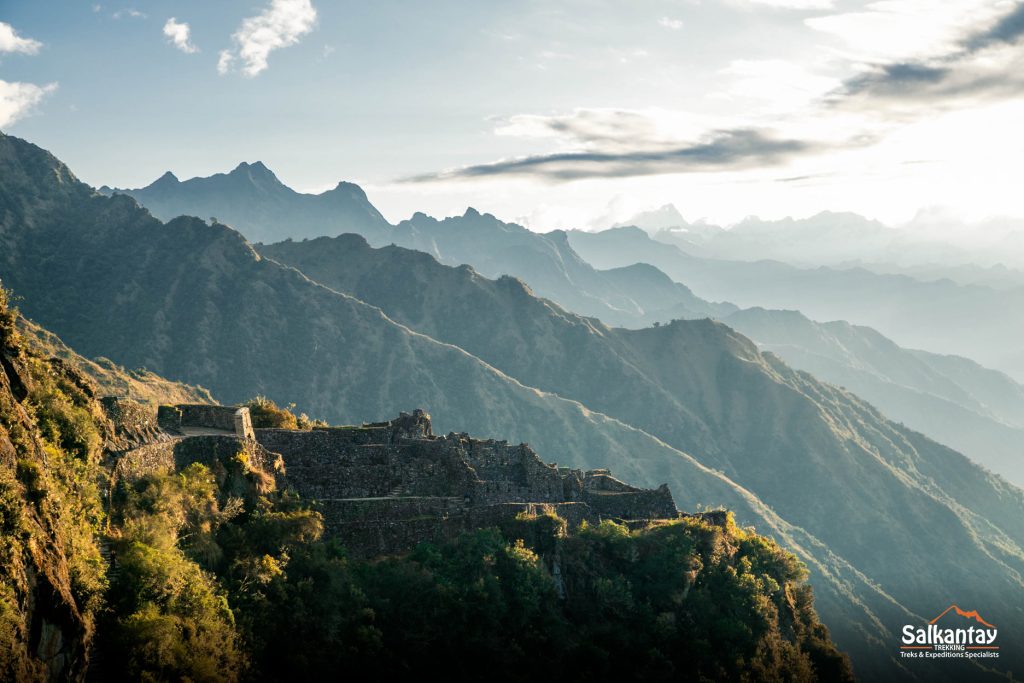
Choquequirao Trail
The Choquequirao Trail has a similar climate to the Inca Trail but with some differences. It starts at lower altitudes, around 1,500 meters (4,921 feet), and ascends to 3,100 meters (10,170 feet) at the Choquequirao ruins. The altitude differences and sun exposure make it slightly warmer than the Inca Trail, especially in the early stages.
- Lower sections: The initial stretches of the Choquequirao Trail are warm and humid, typical of tropical forest regions. Daytime temperatures with high humidity can range from 20°C to 30°C (68°F y 86°F). However, as the trail is less traveled, the environment is wilder and less influenced by humans.
- Higher sections: As the trail reaches higher elevations, such as the Choquequirao ruins, the climate becomes more temperate, with temperatures ranging from 10°C to 18°C (50°F y 64°F). While daytime temperatures are pleasant, nights can be cold, dropping to near 0°C (32°F) in the highest areas.
- Dry and rainy seasons: Like the Inca Trail, the best time to explore the Choquequirao Trail is during the dry season (May to October), when rains are less frequent and trekking conditions are better.
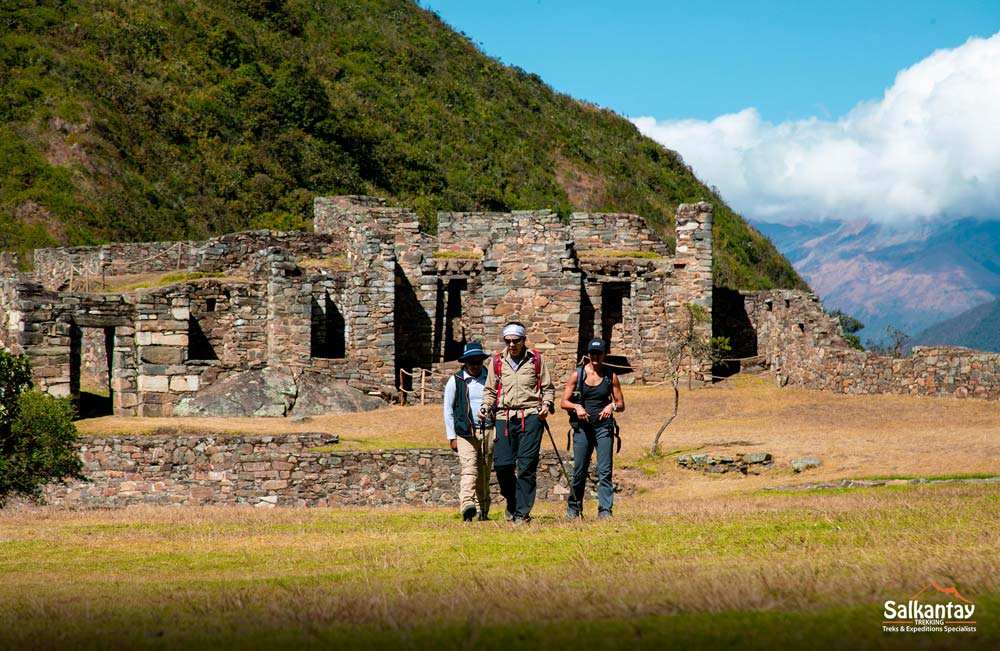
Summary of Climatic Differences
- Altitudes: The Inca Trail has a greater variation in altitude, ranging from 2,400 meters to 4,200 meters (7,874 feet and 13,780 feet), which creates more extreme temperature variations and a higher risk of altitude sickness. On the other hand, the Choquequirao Trail varies between 1,500 meters and 3,100 meters (4,921 feet and 10,170 feet), with a more stable climate and a more manageable altitude. However, it’s still important to allow for an adaptation period to minimize the risk of altitude sickness and fully enjoy the trek.
- Temperatures: The Inca Trail tends to be colder in the higher sections, with lower nighttime temperatures. The Choquequirao Trail offers a warmer climate in its early stages, thanks to its tropical forest regions, though it also becomes more remarkable in the higher sections.
- Overall climate: The Inca Trail passes through a wider diversity of ecosystems, including subtropical zones, cloud forests, and high mountain regions. The Choquequirao Trail, meanwhile, has more tropical characteristics in the lower areas and a mountain climate in the higher ones.
Both trails offer stunning natural beauty and climatic challenges, but it’s essential to be prepared for rapid temperature changes, humidity, and the possibility of rain.
Landscapes and experience
Inca Trail
The Inca Trail offers an iconic experience that takes you through Inca ruins, tropical forests, mysterious cloud forests, and panoramic mountain views, ultimately ending at Machu Picchu. Most of the trail is surrounded by lush nature and impressive biodiversity, combined with a unique cultural and historical immersion thanks to the ruins along the way.
During the trek, you’ll see orchids, bromeliads, and giant ferns. The fauna is diverse: birds like the Andean cock-of-the-rock, hummingbirds, and various butterfly species. If you’re lucky, you might spot the spectacled bear, an indigenous species of the Andes. On the Inca Trail, wildlife is less abundant due to the higher presence of tourists.
Choquequirao Trail
The Choquequirao Trail, being less known, offers a more intimate and isolated experience. Along the way, you walk through rarely explored areas. The path is less impacted by tourism, so nature is preserved in a more pristine state. You’ll pass through dry forests, high-altitude vegetation, and cloud forests, where bromeliads, orchids, and ferns abound. There’s also a greater presence of wildlife: besides birds like the Andean condor and hummingbirds, you’re more likely to see deer, foxes, and other mammals in the more remote areas.
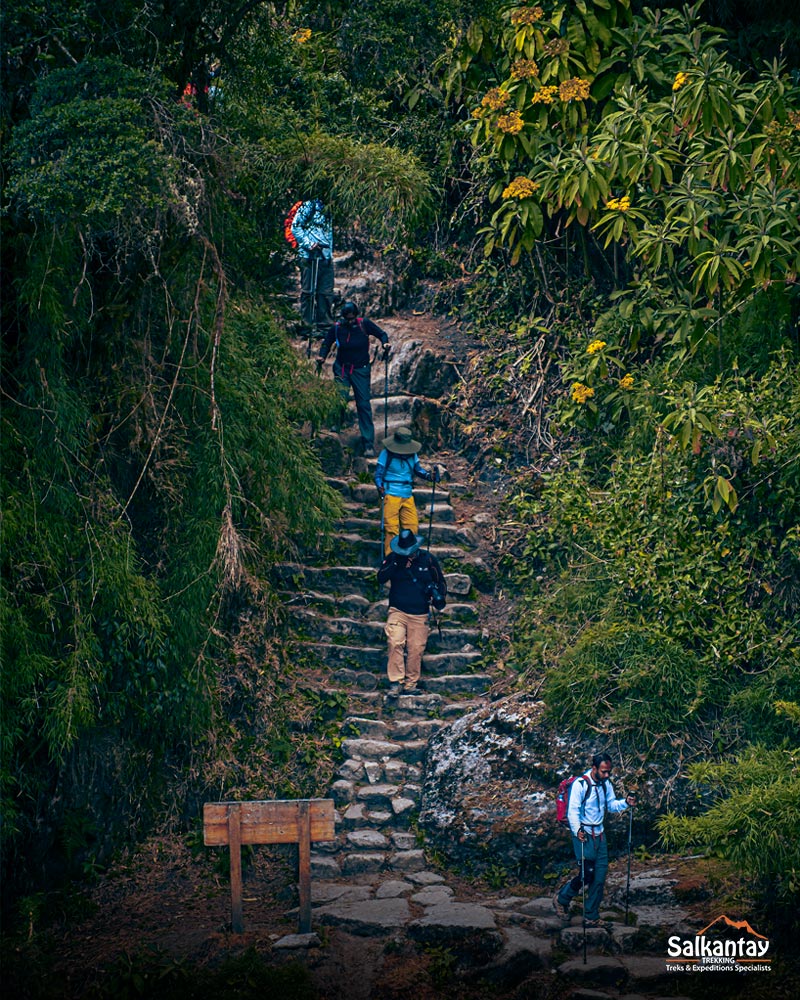
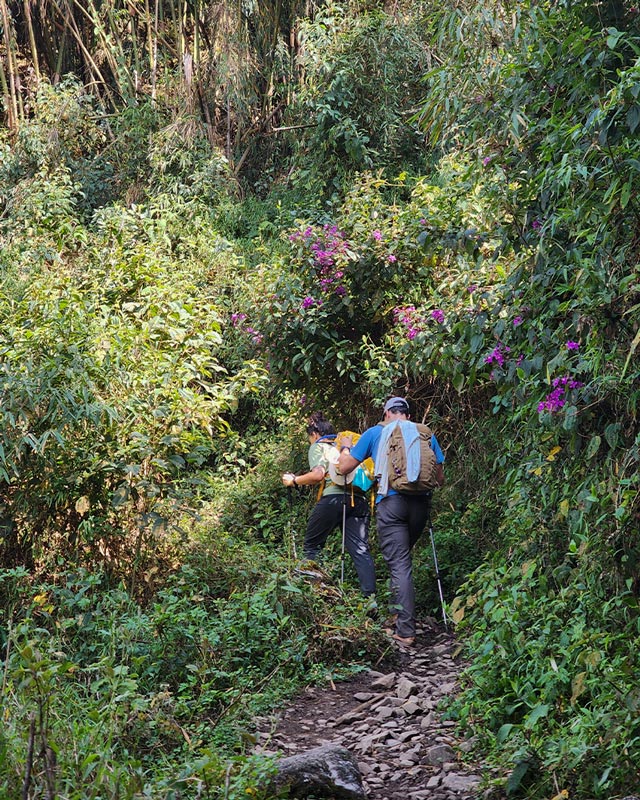
Accessibility and Infrastructure
Inca Trail
The Inca Trail is very accessible and well-structured for tourists, with local guides, organized campsites, and excellent transportation infrastructure. The trail is clearly marked, and most people can complete the hike without major difficulties, as long as they follow acclimatization and physical preparation recommendations.
Please remember that the Inca Trail has limited entry permits that are strictly regulated, so access to the route is more complicated. Make sure to book several months in advance.
Choquequirao Trail
The Choquequirao Trail is more remote and has less tourist infrastructure since it still receives fewer visitors than other routes. Along the hike, there are few service options, making this journey a more isolated and adventurous experience. Therefore, planning and preparation for this trek must be very careful, with proper provisions and equipment to face the challenge.
Travel with an agency and don’t worry about a thing! To secure your entry to the Inca Trail and enjoy complete comfort on the Choquequirao Trail, book with Salkantay Trekking. We will take care of the entrance permits, trekking equipment, tents, full meals, transportation, and professional guides.
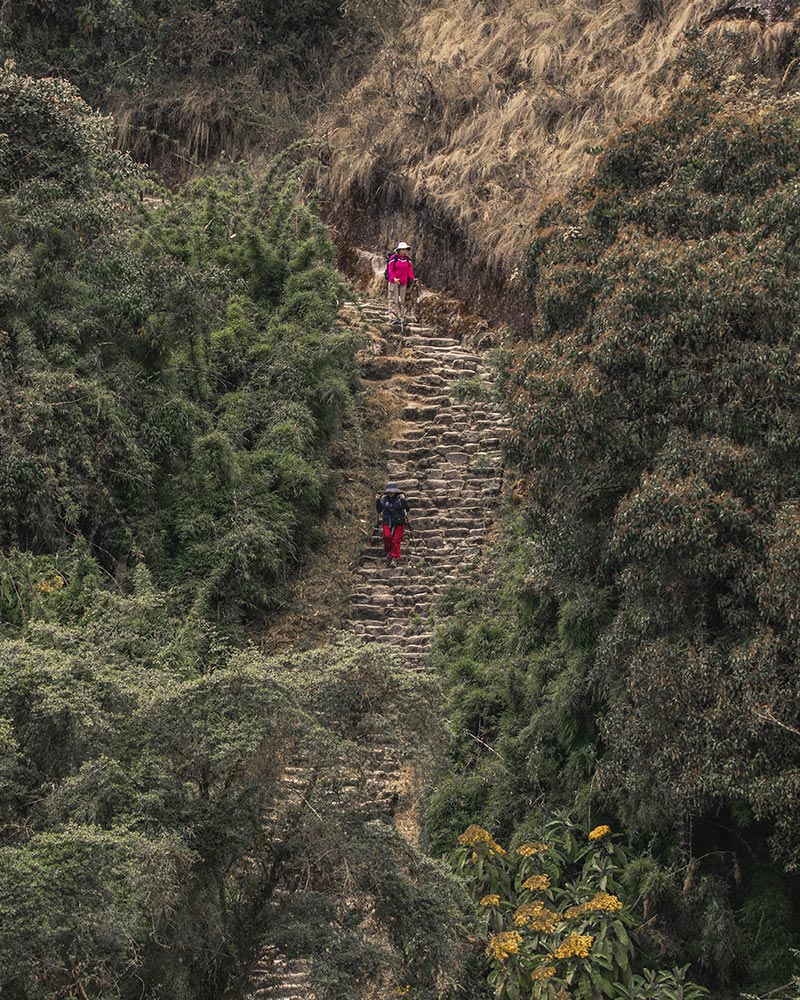
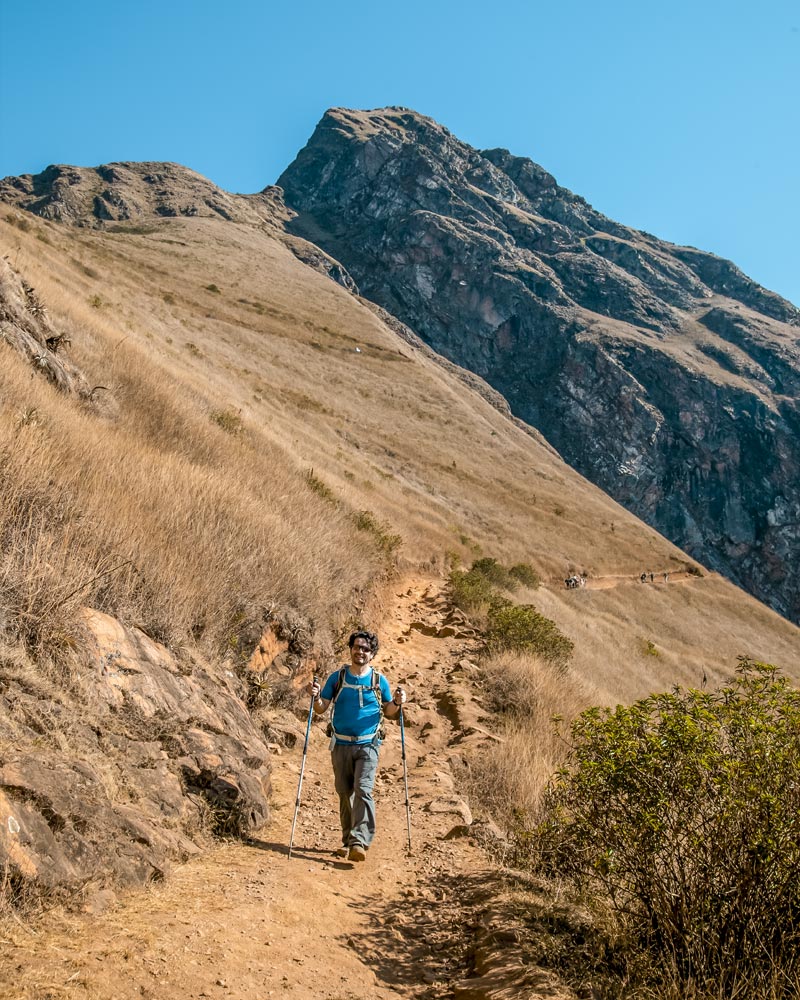
Crowds and Atmosphere
Inca Trail
Due to its worldwide fame and proximity to Machu Picchu, the Inca Trail is highly crowded, especially during peak season (April to October). For those seeking a more solitary and introspective experience, there may be better choices than the Inca Trail, as it is usually hectic, and Machu Picchu is one of the most visited attractions in the world.
Choquequirao Trail
As it is less well-known, the Choquequirao Trail offers a more secluded and less crowded experience. It is ideal for those who prefer a peaceful and contemplative trek away from the masses. It is an excellent choice for exploring a unique, tranquil Peruvian location.
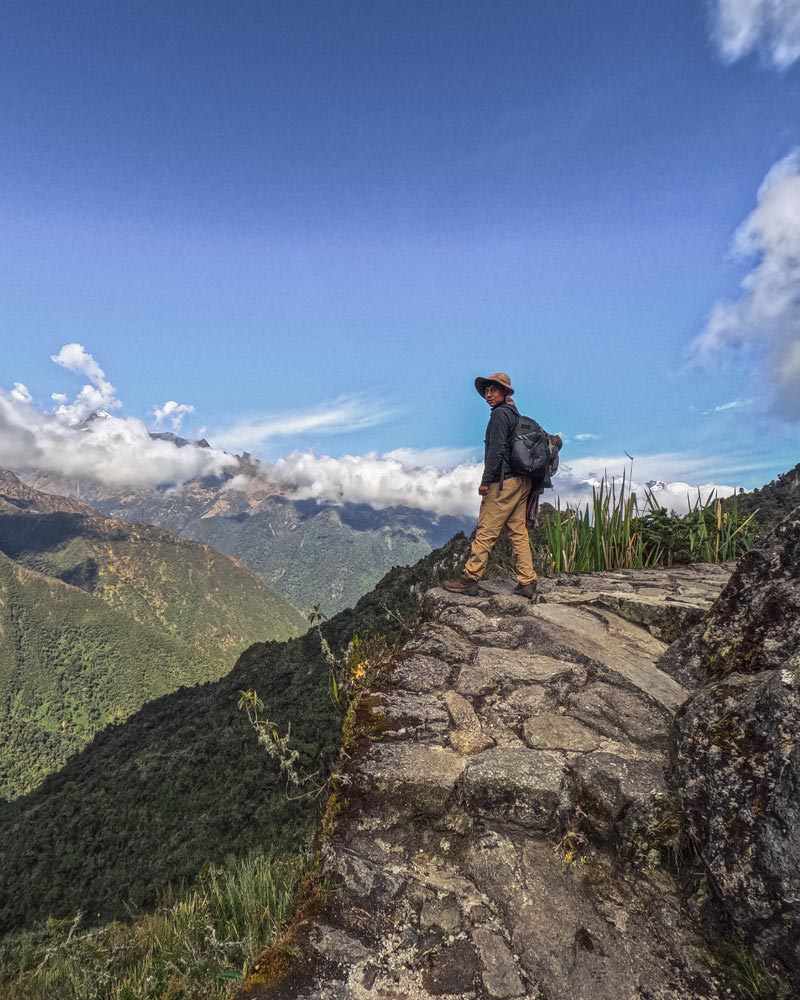
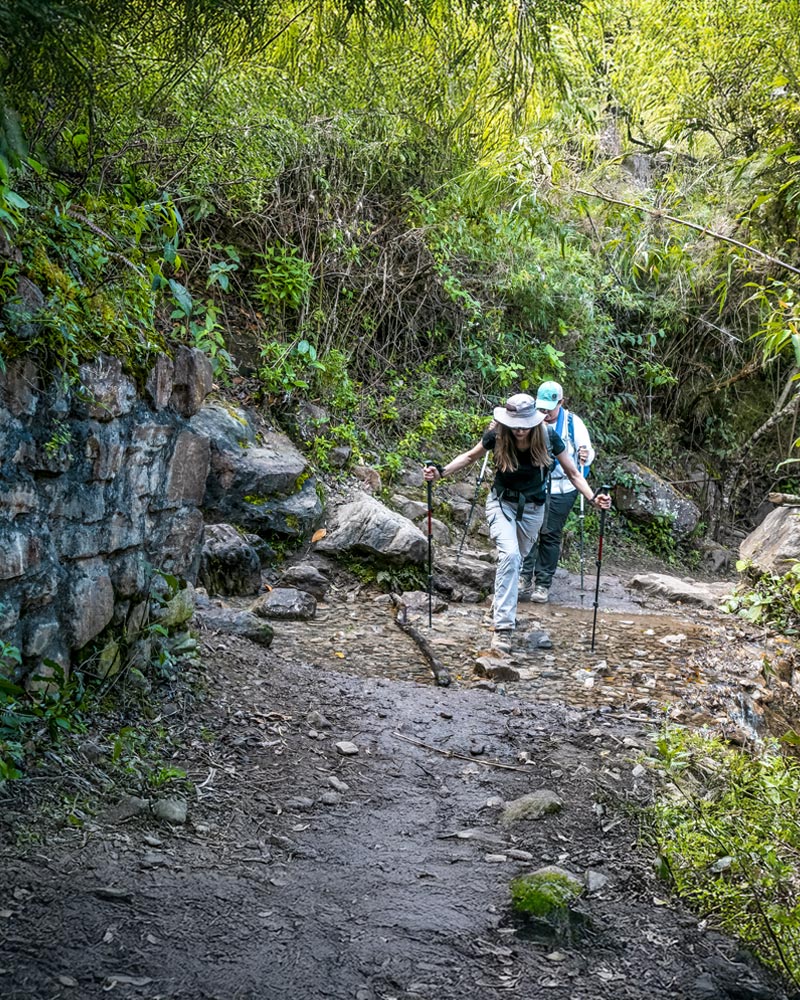
Cost and Permits
Inca Trail
As one of the best hiking routes in Peru and the world, the Inca Trail has high demand. Being an area of great historical and scenic importance, the Peruvian government decided to protect the territory to ensure its conservation. For this reason, there is a limited number of visitors.
The Inca Trail has a daily limit of 500 people, including guides, cooks, and porters, which means spots fill up quickly. Additionally, since it is a zone regulated by the Government of Peru, access is only allowed through a certified tourism agency.
On the other hand, this guarantees an organized experience, although it also makes it more expensive compared to other trails due to the cost of access to the route and Machu Picchu. At Salkantay Trekking, the all-inclusive price is $795 USD.
Choquequirao Trail
Unlike the Inca Trail, you do not need a special permit to hike this route; you only need to purchase the entrance ticket to Choquequirao, the archaeological site. This trek is usually less crowded, as demand is lower and it is not necessary to book as far in advance.
The entrance ticket prices for Choquequirao are:
- Foreign adults: S/ 60 (approximately USD 16)
- University students: S/ 30 (approximately USD 8)
Overall travel costs tend to be lower. At Salkantay Trekking, the all-inclusive price is $600 USD.
Conclusion: Which is the Better Choice?
- Choose the Inca Trail if you are looking for a historical and immersive experience that will take you to Machu Picchu while crossing spectacular landscapes. Without a doubt, it is a well-structured route, with a shorter and moderate hike, culminating in the iconic Inca citadel. It is the ideal option for those who want to combine culture, history, and a more tourist-friendly trek.
- Choose the Choquequirao Trail if you are an experienced adventurer seeking solitude and a more authentic connection with nature. It is perfect for those who want a peaceful and challenging experience, away from the crowds, exploring one of the last great lesser-known Inca wonders.
Both trails offer breathtaking landscapes and a unique immersion into the history of the Inca Empire. Your choice depends on your traveler profile and the experience you wish to have in the Peruvian Andes.
Whichever path you choose, Salkantay Trekking is your guarantee for unforgettable memories. We look forward to sharing the most incredible experience with you!
You May Also Like
- Inca Trail: Essential Gear for an Unforgettable Adventure
- How to be prepared for the Inca Trail?
- What to Wear for The Inca Trail?
- Exploring Choquequirao with Salkantay Trekking
- Choquequirao: Top Things to Know Before Your Trek
- The Road to Choquequirao: The Long Hike to Peru’s Less-Visited ‘Lost City’
- Trip to Cusco: How to Organize the Perfect Itinerary


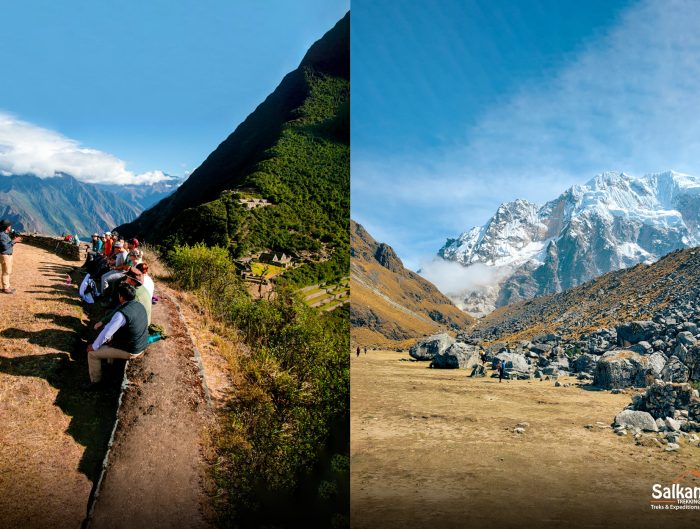

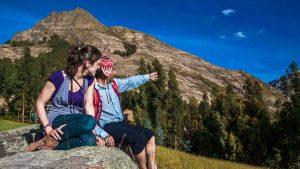
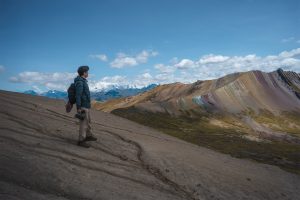
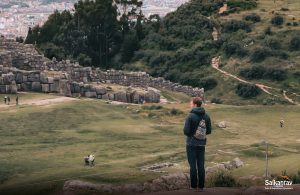
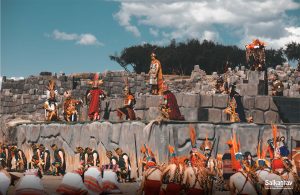
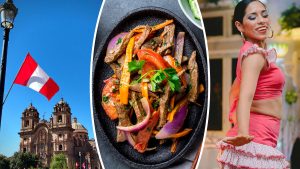
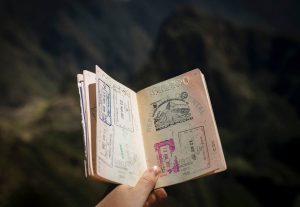
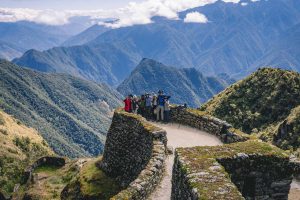

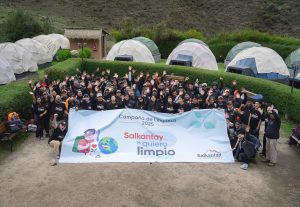

Leave A Reply